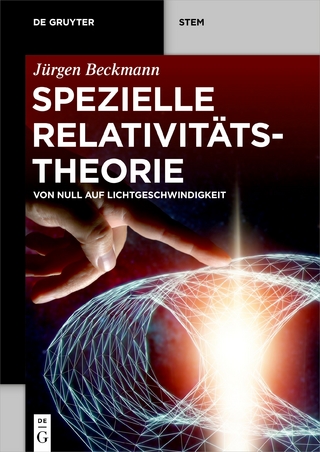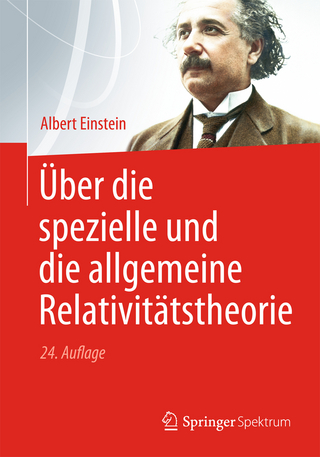
Einstein's Unfinished Symphony
Listening to the Sounds of Space-Time
Seiten
2000
Joseph Henry Press (Verlag)
978-0-309-06987-8 (ISBN)
Joseph Henry Press (Verlag)
978-0-309-06987-8 (ISBN)
- Titel ist leider vergriffen;
keine Neuauflage - Artikel merken
Captures the excitement as two gravity-wave observatories in Louisiana and Washington State, as well as others in Italy, Germany, and Japan, approach operation and physicists gear up to begin their work to register the long-predicted quakes in space-time.
A new generation of observatories, now being completed worldwide, will give astronomers not just a new window on the cosmos but a whole new sense with which to explore and experience the heavens above us. Instead of collecting light waves or radio waves, these novel instruments will allow astronomers to at last place their hands upon the fabric of space-time and feel the very rhythms of the universe.
These vibrations in space-time-or gravity waves-are the last prediction of Einstein's general theory of relativity yet to be observed directly. They are his unfinished symphony, waiting nearly a century to be heard. When they finally reveal themselves to astronomers, we will for the first time be able to hear the cymbal crashes from exploding stars, tune in to the periodic drumbeats from swiftly rotating pulsars, listen to the extended chirps from the merger of two black holes, and eavesdrop on the remnant echoes from the mighty jolt of the Big Bang itself.
When Einstein introduced general relativity in 1915, it was hailed as a momentous conceptual achievement. Einstein attained celebrity status. But, once scientists verified what they could of the theory, given the scant experiments available at the time, general relativity became "largely a theoretical curiosity," writes Marcia Bartusiak.
Now, after decades of technological advancement, general relativity is being tested with unprecedented accuracy. It even affects our everyday lives. Satellites used by both travelers and soldiers to peg their positions require constant corrections of Einsteinian precision. Meanwhile, the first gravity-wave "telescopes"-including the LIGO facility-are about to come alive.
In Einstein's Unfinished Symphony, Bartusiak captures the excitement as two gravity-wave observatories in Louisiana and Washington State, as well as others in Italy, Germany, and Japan, approach operation and physicists gear up to begin their work to register the long-predicted quakes in space-time.
With each chapter, Bartusiak continues her musical metaphor in tracing the story of general relativity, from the time "Maestro" Einstein enters physics, through the "Starlight Waltz" of neutron stars twisting space-time around themselves, to the "Dissonant Chords" of controversy as physicists fight to get their radically new observatories approved, through the "Finale" as a worldwide endeavor in gravity-wave astronomy is launched.
A new generation of observatories, now being completed worldwide, will give astronomers not just a new window on the cosmos but a whole new sense with which to explore and experience the heavens above us. Instead of collecting light waves or radio waves, these novel instruments will allow astronomers to at last place their hands upon the fabric of space-time and feel the very rhythms of the universe.
These vibrations in space-time-or gravity waves-are the last prediction of Einstein's general theory of relativity yet to be observed directly. They are his unfinished symphony, waiting nearly a century to be heard. When they finally reveal themselves to astronomers, we will for the first time be able to hear the cymbal crashes from exploding stars, tune in to the periodic drumbeats from swiftly rotating pulsars, listen to the extended chirps from the merger of two black holes, and eavesdrop on the remnant echoes from the mighty jolt of the Big Bang itself.
When Einstein introduced general relativity in 1915, it was hailed as a momentous conceptual achievement. Einstein attained celebrity status. But, once scientists verified what they could of the theory, given the scant experiments available at the time, general relativity became "largely a theoretical curiosity," writes Marcia Bartusiak.
Now, after decades of technological advancement, general relativity is being tested with unprecedented accuracy. It even affects our everyday lives. Satellites used by both travelers and soldiers to peg their positions require constant corrections of Einsteinian precision. Meanwhile, the first gravity-wave "telescopes"-including the LIGO facility-are about to come alive.
In Einstein's Unfinished Symphony, Bartusiak captures the excitement as two gravity-wave observatories in Louisiana and Washington State, as well as others in Italy, Germany, and Japan, approach operation and physicists gear up to begin their work to register the long-predicted quakes in space-time.
With each chapter, Bartusiak continues her musical metaphor in tracing the story of general relativity, from the time "Maestro" Einstein enters physics, through the "Starlight Waltz" of neutron stars twisting space-time around themselves, to the "Dissonant Chords" of controversy as physicists fight to get their radically new observatories approved, through the "Finale" as a worldwide endeavor in gravity-wave astronomy is launched.
Marcia Bartusiak
1 Front Matter; 2 Prelude; 3 Space in G Flat; 4 The Maestro Enters; 5 Starlight Waltz; 6 Pas De Deux; 7 Bars and Measures; 8 Dissonant Chords; 9 A Little Light Music; 10 Variations on a Theme; 11 The Music of the Spheres; 12 Finale; 13 Coda; 14 Bibliography; 15 Index
| Erscheint lt. Verlag | 3.10.2000 |
|---|---|
| Verlagsort | Washington |
| Sprache | englisch |
| Maße | 152 x 229 mm |
| Themenwelt | Naturwissenschaften ► Physik / Astronomie ► Relativitätstheorie |
| ISBN-10 | 0-309-06987-4 / 0309069874 |
| ISBN-13 | 978-0-309-06987-8 / 9780309069878 |
| Zustand | Neuware |
| Haben Sie eine Frage zum Produkt? |
Mehr entdecken
aus dem Bereich
aus dem Bereich
Autobiographische und wissenschaftliche Reflexionen
Buch | Softcover (2022)
De Gruyter Oldenbourg (Verlag)
39,95 €
Von Null auf Lichtgeschwindigkeit
Buch | Softcover (2021)
De Gruyter Oldenbourg (Verlag)
59,95 €
Buch | Softcover (2012)
Springer Berlin (Verlag)
64,99 €


